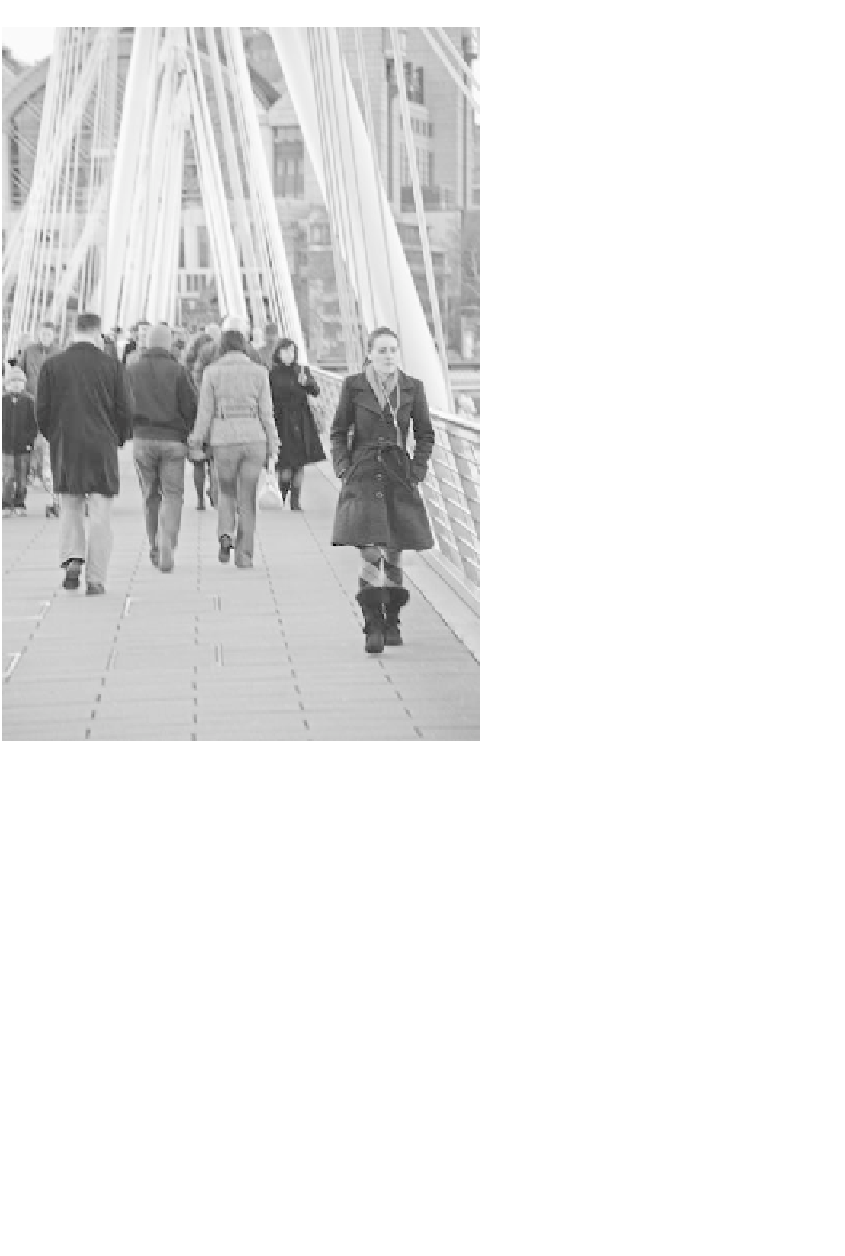Environmental Engineering Reference
In-Depth Information
Figure 3.31
Hungerford Bridge. Some of the new pedestrian crossings over the Thames are of excellent
quality, almost becoming tourist attractions in their own right.
Cervero, 2001; Handy et al., 2002; Newman and Kenworthy, 1989; Newman and Kenworthy,
1999; Banister, 2008).
Urban structure provides the underlying 'physical rationale' for travel, alongside wider
influences such as socio-economic and attitudinal/cultural characteristics, affecting the main
characteristics of travel - the numbers of trips made, trip distribution, journey lengths and
mode share, and consequently a major part of transport CO2 emissions. Efforts can be directed
at both strategic as well as local scales (Hickman et al., 2009c). Despite this, urban planning
is often underplayed as a tool in traffic demand management strategies (Banister and Hickman,
2006; Hickman and Banister, 2005; Hickman and Banister, 2007b). Dispersed urban areas
and low densities, which are evident in suburban areas in London and elsewhere, certainly
preclude the use of public transport, walking and cycling, and tend to facilitate private car
dependency. Hence spatial structure sets the physical 'envelope' for travel.
This package assumes a high-intensity application of urban planning to reduce travel CO2
emissions (London Plan++) - so a much greater effort than even the current policy approach
in using higher densities and the location of development to support sustainable transport.
Higher density development is clustered around an upgraded public transport system - with

